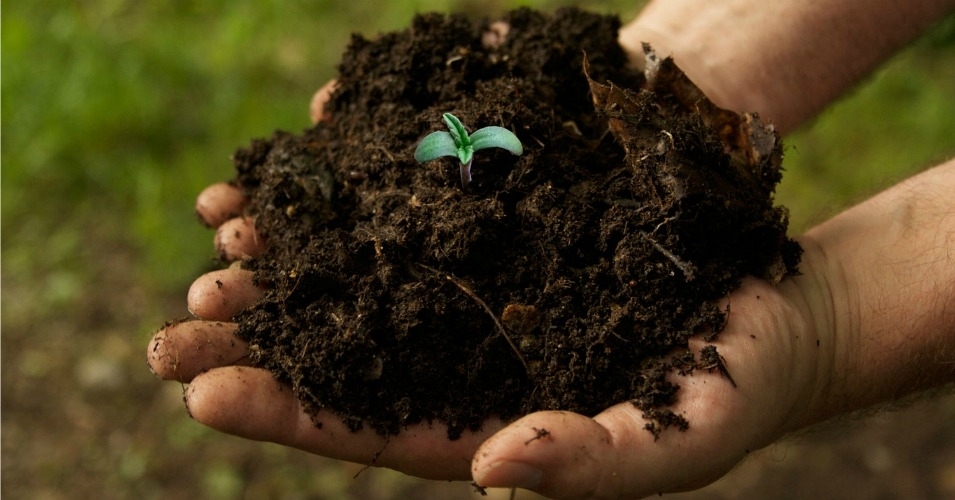Published on Thursday, December 24, 2015 by Common Dreams
Transitioning to organic regenerative agriculture practices 'offers the best, and perhaps our only, hope for averting a global warming disaster.' by Deirdre Fulton, staff writer

"Organic regenerative agriculture and land use is the other half of the climate solution,"
says Katherine Paul of the Organic Consumers Association.
A critical tool in the fight against global warming is right below our feet.
So where is this "shovel-ready solution" amid all the talk of climate fixes in the wake of the COP21 summit in Paris?
"Instead of subsidizing a food and farming system that contributes to global warming while degenerating soils and local economies, we should start rewarding farmers and ranchers for restoring the soil's organic matter and drawing down carbon." — Katherine Paul, Organic Consumers Association
An Associated Press article published Thursday, for example, professes to outline "methods to achieve negative emissions," wherein humans remove more greenhouse gases from the atmosphere than they put in it. The AP quotes scientists who say "it's clear" that the goals laid out in Paris "cannot be reached without negative emissions in the future, because the atmosphere is filling up with greenhouse gases so fast that it may already be too late to keep the temperature rise below 1.5 degrees C."
Among the solutions mentioned in the piece: "fertilizing the oceans with iron to make them absorb more carbon," "planting more forests," and "carbon capture technologies."
But there was no mention of agroecology, or regenerative agriculture—practices that work with nature, avoiding the damaging impacts of industrial agriculture, such as no-till farming, composting, planned grazing, and cover crops.
As Diana Donlon, food and climate director at the Center for Food Safety, said earlier this month to mark World Soil Day: "Through regenerative farming practices, we have the ability to pull carbon out of the atmosphere, where it is wreaking havoc, and store it in the soil, where it is greatly lacking and where it has multiple benefits for food, water and climate security."
For Katherine Paul, associate director of the Organic Consumers Association, omitting these practices from mainstream reporting, and not including them in the conversation about climate change, is a missed opportunity.
"No talk of global warming solutions is complete without addressing agriculture—both its contribution to global warming and its potential for solving the crisis," she told Common Dreams on Thursday.
She noted that the world’s soils have lost 50–70 percent of their carbon stocks and fertility—a crisis largely attributed to modern chemical-intensive, factory-farm, GMO-based industrial agriculture. And she cited a recent report from GRAIN, which shows that when deforestation, transportation, synthetic fertilizer production, and wetlands destruction are factored in, Big Ag contributes more than 50 percent of total greenhouse gas emissions.
"We must restore the soil's potential to store carbon," Paul declared. "We must also, in addition to reducing emissions, draw down billions of tons of CO2 already in the atmosphere."
"Fortunately," she continued, "we have the tools to do this. Organic regenerative agriculture and land use is the other half of the climate solution."
Though some have said the COP21 talks were "a disaster for agroecology," Paul points to the French 4 per 1000 Initiative, through which governments can now incorporate carbon sequestration through organic agriculture into their climate plans. She urged the U.S. to follow France's lead.
"Instead of subsidizing a food and farming system that contributes to global warming while degenerating soils and local economies," she said, "we should start rewarding farmers and ranchers for restoring the soil's organic matter and drawing down carbon."
Yet a recent study looking at research-dollar allocation within the U.S. Department of Agriculture revealed a dearth of funding for agroecological research and "an urgent need for additional public funding for systems-based agroecology and sustainable agriculture research."
Indeed, the future of the planet depends on it, Paul said. "Transitioning from industrial ag, a huge contributor to global warming, to organic regenerative offers the best, and perhaps our only, hope for averting a global warming disaster."
Source: This work is licensed under a Creative Commons Attribution-Share Alike 3.0 License (http://www.commondreams.org/news/2015/12/24/theres-way-save-our-future-so-why-arent-more-people-talking-about-it)
|